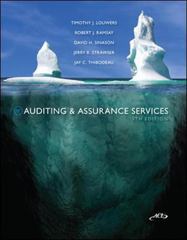Question
Homes For Sale Data were collected from a random sample of 120 homes for sale in the United States. The variables in the data set
Homes For Sale
Data were collected from a random sample of 120 homes for sale in the United States. The variables in the data set include the following:
- Price: asking price (in thousands of dollars)
- Size: livable area (in thousands of square feet)
- Beds: number of bedrooms
- Bath: number of bathrooms
Research question
1. Is there a relationship between the size of a house and asking price?
2. Can the asking price of a house be predicted using the size, number of bedrooms, and number of bathrooms?
I conducted the correlation for the question 1, and the regression for the question 2. The result of them are below;
Based on the hypothesis test and the confidence interval, this study provides no evidence that the relationship between the size of a house (M = 2.034, SD = 1.118) asking price (M = 479.708, SD = 686.636). There is a large effect size. A Pearson's product-moment correlation was run to assess the relationship between the size of a house and asking price. There was a strong positive correlation between the size of a house and asking price, r=0.653, p<0.01, with size of a house 43% of the variation in asking price of house.
The linear regression was conducted to assess the relationship between pairs of Homes for Sales variables: the price (M=479.708, SD=686.636), the size(M=2.034, SD=1.118, number of bedrooms(M=3.275, SD=1.115), number of bathroom(M=2.324, SD=1.067).
There was moderate positive relationship between the price and the size, r=0.603, p<0.01. There was no linear relationship between the price and the number of bedrooms, r=0.326, p<0.01. There was moderate positive relationship between the price and the number of bathrooms, r=0.602, p<0.01.
A linear regression established that the size could statistically significantly predict the asking price of house, F(1,118)=87.489, and the size accounted for 43% of the explained variability in the asking price of house. The regression equation was: predicted the price of house=-335.50+400.759x(size). A linear regression established that the number of bedrooms could statistically significantly predict the asking price of house, F(1,118)=14.069, and the number of bedrooms accounted for 11% of the explained variability in the asking price of house. The regression equation was: predicted the price of house=-178.582+201.005x(the number of bedrooms). A linear regression established that the number of bathrooms could statistically significantly predict the asking price of house, F(1,118)=67.085, and the number of bathrooms accounted for 36% of the explained variability in the asking price of house. The regression equation was: predicted the price of house=-420.524+387.405x(the number of bathrooms)
Question> And I should write the suggestion for the future research, so what can be the future research ideas based on the finding this study? or what can be the future research suggestions?
Step by Step Solution
There are 3 Steps involved in it
Step: 1

Get Instant Access to Expert-Tailored Solutions
See step-by-step solutions with expert insights and AI powered tools for academic success
Step: 2

Step: 3

Ace Your Homework with AI
Get the answers you need in no time with our AI-driven, step-by-step assistance
Get Started


